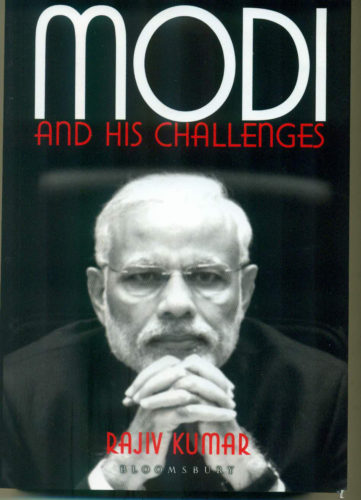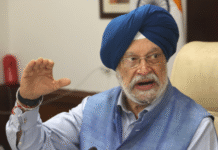By Meghna Mittal
Title: Modi And His Challenges; Author: Rajiv Kumar; Publisher: Bloomsbury; Pages: 307; Price: Rs 499
Former Finance Minister P. Chidambaram’s last budget artificially brought down the country’s fiscal deficit, leaving the Prime Minister Narendra Modi’s government with a huge unpaid bill, says economist Rajiv Kumar in his latest book.
“P. Chidamabaram, the outgoing UPA finance minister, left an unfriendly parting gift in the interim budget for 2014-15 that he presented in February 2014. He artificially brought down the fiscal deficit for 2013-14 fiscal year that was ending in March 2014, to 4.6 per cent by slashing plan expenditure and bringing forward dividend payments by public sector enterprises to boost his revenues,” Rajiv Kumar writes.
 “Thus, Chidambaram, brought in by the UPA in September 2012 to try and retrieve the economic situation, left a huge unpaid bill for the next government.”
“Thus, Chidambaram, brought in by the UPA in September 2012 to try and retrieve the economic situation, left a huge unpaid bill for the next government.”
The author, who is the Founder Director of Pahle India Foundation, a non-profit research organisation that specialises in policy-oriented research and analysis, says Chidambaram had dressed up the budget estimates for 2014-15 by assuming optimistic revenue and subdued expenditure growth estimates.
“Evidently, Chidambaram was already convinced that a Congress finance minister would not have to present the next budget.”
The author also questions India’s high growth rate, calling it a chimera. He writes that RBI Governor Raghuram Rajan and Chief Economic Adviser Arvind Subramanian had both questioned the high GDP rate of over seven per cent.
“Both not only questioned the new estimates but asked for them to be reviewed,” the author writes.
The author needs to be credited for the fact that he has tried to explore as well as analyse in totality governance during Modi’s rule with its challenges, shortcomings, expectations, failures and plans for the future.
The book’s avowed rather heroic goal is to try and understand if the present prime minister’s track record as Gujarat’s chief minister has equipped him sufficiently to tackle the enormous challenges that face him in Delhi.
Speaking about the upcoming Uttar Pradesh polls, the author states: “Modi and the BJP will have to work extraordinarily hard to come even somewhat close, let alone repeat, the astounding success it managed in the Lok Sabha elections in Uttar Pradesh when the state goes to the polls in 2017.”
The author states that though the astounding success of mission 272-plus made Modi the face of the BJP in the 2014 general elections, the circumstances are changing.
“That Modi had a relatively short time-horizon to deliver on his promises became crystal clear in January 2015, only nine months after the famous (2014) victory when the BJP was trounced in the Delhi elections.”
“Recent elections in Bihar have seriously dented Modi’s stature as a national leader and set back the emergence of BJP as a national party,” Rajiv Kumar writes.
The book is balanced in the sense that the author has articulately brought out the positives and negatives of Modi’s policies. While he credits him for hyper-active foreign policy and a governance marked by the absence of reports of corruption, he also talks about not taking many policy initiatives to make a clean break from the past.
The book is noteworthy for separately detailing the policy aspects of the Modi government in each sector.
It also lays out challenges the government faces in the social sector as 150 of India’s 650 districts are afflicted by left-wing extremism or Maoist activity, news of farmers’ suicides continue to come in from different states and increasing reports of Indian youth being attracted to terrorist organisations like the Islamic State and other domestic fundamentalist groups. (IANS)







